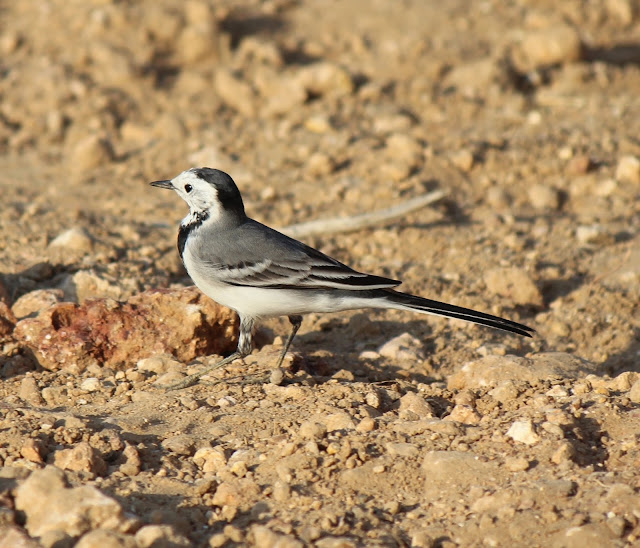The village of Khuri is about 50 kilometers from the princely city of Jaisalmer, nestled in the huge sand dunes of the Thar Desert. It was winter time and one one of the best time to spot the migratory birds which come here during this season, especially the buzzards, harriers, griffon vultures and the wheaters and also the the other local birds like the doves, shikras and bee-eaters.
This beautiful scene is from the dunes at sunset time. The Acacia groves were home to Harriers, Wheaters, Bushchats, Wagtails and off-course the most adaptable Indian Peafowl. The mountainous region with the windmills is part of the desert national park. Sadly, we couldn't go there. The Desert National Park is one of the only strongholds of the Great Indian Bustard. It is also houses a diversity of other avifauna like Sandgrouses, Floricans, Eagles, Vultures, Falcons, Francolins, Quails, Harriers, Bee-Eaters and other open country birdlife. Beyond that is the princely city of Jaisalmer. Even though we didn't go officially to desert national park we spotted rare birds(quite common in these parts but extremely rare in Goa)like Vultures and Buzzards, namely the Long-legged Buzzard.
The Long-Legged Buzzard is a stocky kite-sized bird of prey. It migrates to parts of Western and South-Western India in the winter. It mostly prefers dry deciduous, semi-desert and scrub habitat. Most of the times when I observed this buzzard, it was usually perched on a low bush and fled at the slightest sign of disturbance. I mostly sighted it at late mornings and afternoon. Vultures were often found soaring above the land searching for a carcass. Many Long-Billed and Egyptian Vultures were sighted in this region. I also spotted an immature Egyptian Vulture and an adult feeding on a carcass of a cow. They had slit open the belly of the animal and were eating parts of the front foot. They too abandoned their prey after 2-3 minutes of observation.
We also found other passerines like Wheaters, Wagtails, Munias and Sparrows. The hotel which we were staying at also boasted a large amount of birdlife. Every morning the peafowls used to wake us up at about 6:30 with their calls. By about eight o'clock in the morning bird movement in the area would be maximum. For our 2 day stay at the hotel I could spot the Variable, Pied and Desert Wheater, Green Bee-Eater, White and White-Browed Wagtail, House Sparrows, Tawny Eagle, Long-Billed and Egyptian Vulture, Eurasian Griffon, Shikra, White-Eyed and Long-legged Buzzard, Laughing, Red and Eurasian Collared Dove, Indian Peafowl, Indian Roller, Pallid Harrier, Yellow-footed Green Pigeon(on the outskirts of a forest near Jaisalmer.) and the Grey Francolin.
Surprisingly, I also spotted Purple Sunbirds here. There were not many flowering trees in the vicinity too. I even spotted many White-Eared Bulbuls.
The Yellow-Footed Green Pigeon I mentioned about before were spotted were on a fruit-laden tree on the outskirts of Jaisalmer. I was surprised to see them so far away from forest.
 |
| The view of Khuri from the dunes |
 |
| Long-legged Buzzard |
 |
| Long-Billed Vultures |
 |
| Egyptian Vultures |
 |
| Green Bee-Eater |
 |
| Indian Peafowl |
 |
| Desert Wheater |
 |
| Red-Collared Dove |
 |
| White Wagtail |
 |
| White-Eared Bulbul |
 |
| Variable Wheater |
 |
| Variable Wheater |
 |
| Pallid-Harrier |
 |
| Purple Sunbird in its eclipse plumage |
 |
| Yellow-Footed Green Pigeons |
 |
| Indian Roller |
 |
| Indian Silverbill |
 |
| Grey Francolins |

No comments:
Post a Comment